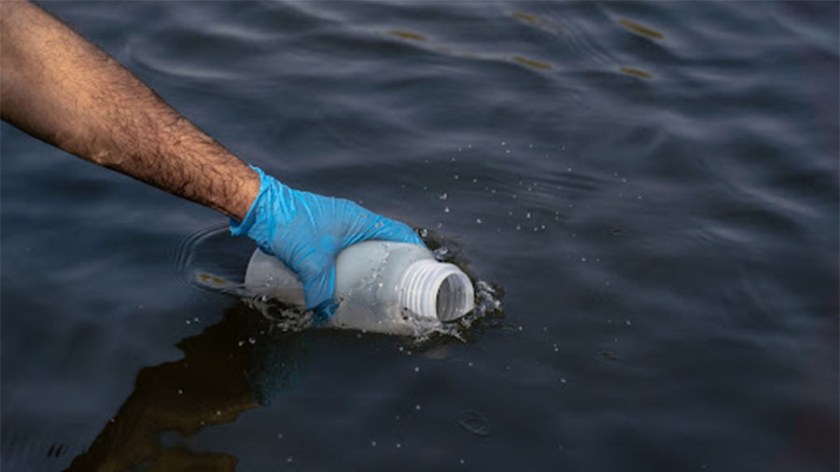The 13th NEOBIOTA International Conference on Biological Invasions (NEOBIOTA 2024), held in Lisbon, Portugal, brought together 421 participants from 47 countries for one of the most significant global gatherings in invasion science. Notably, this meeting featured the strongest representation of aquatic studies to date, spanning marine and freshwater systems across oral sessions, posters and workshops.
This momentum contributed to the creation of a dedicated NeoBiota Special Issue, incorporating contributions from both conference participants and other aquatic researchers.
As outlined in the editorial paper – written by the issue’s editors Pedro Anastácio, Filipe Ribeiro and Paula Chainho – the collection comprises 23 papers organised into five themes: Responses to Environmental Stressors; Ecological Interactions and Invasion Impacts; Detection and Monitoring Tools; Management and Policy; and Global and Regional Syntheses.
Explore the articles below.
Responses to environmental stressors
Biotic responses to abiotic drivers – such as warming, pollution or eutrophication – are central to predicting invasion success, as explored in the following articles:
- Functional trait responses of emergent and free-floating Alternanthera philoxeroides to increasing salinity with sea level rise: stress tolerance, avoidance, and escape strategies – Grewell et al. (2025) https://doi.org/10.3897/neobiota.102.150325
- Differential elemental accumulation of the signal crayfish (Pacifastacus leniusculus) along an invasion gradient – Gonçalves et al. (2025) https://doi.org/10.3897/neobiota.102.148414
- Assessing the upper thermal limit constraining the physiological performance of Callinectes sapidus embryogenesis under climate warming scenarios – Rodríguez-Ruiz et al. (2025) https://doi.org/10.3897/neobiota.102.148122
- Invasive potential of Phymactis papillosa: assessing environmental tolerance and ecological impact on the Portuguese intertidal ecosystems – Pereira et al. (2025) https://doi.org/10.3897/neobiota.102.148042
- Nutrient enrichment and artificial light at night synergistically confer a competitive advantage to alien aquatic species over natives – Zhang et al. (2025) https://doi.org/10.3897/neobiota.102.142791
Ecological interactions and invasion impacts
Interactions between invading species, native species, and other non-native species, are critical in determining the population dynamics and ecological impacts. This group of papers includes studies dedicated to freshwater fish, crustaceans, amphibians, higher plants and algae, and estuarine bivalves:

- Evaluating brown trout as a potential biological control agent of signal crayfish – Matos et al. (2025) https://doi.org/10.3897/neobiota.102.152018
- Eating contest between native and non-indigenous bivalve species: estimating capture efficiencies and clearance rates using natural seston – Cabral et al. (2025) https://doi.org/10.3897/neobiota.102.148326
- Shift in parasite load in native and non-native Eupercarian fish species living in sympatry – Tkachenko et al. (2025) https://doi.org/10.3897/neobiota.102.148301
- Predatory interactions between two global aquatic invaders beyond their native ranges: An experimental approach – Reshetnikov et al. (2025) https://doi.org/10.3897/neobiota.102.145644
- Epiphytic algae mitigate the inhibitory effects of two aquatic invasive plants, Pontederia crassipes and Pistia stratiotes, on a submerged plant community – Shen et al. (2025) https://doi.org/10.3897/neobiota.102.144004
Detection and monitoring tools
Monitoring of non-native species has evolved beyond taxonomic surveys to incorporate the use of molecular tools, informatics and citizen science for detecting and monitoring non-native species:
- Integrating social media and environmental DNA records to enhance surveillance and improve early detection of invasive species – Dias et al. (2025) https://doi.org/10.3897/neobiota.102.151710
- Mapping the northernmost transnational non-native population of Xenopus laevis using pooled eDNA sampling – Everts et al. (2025) https://doi.org/10.3897/neobiota.102.150311
- Integrative taxonomy reveals non-native Squalius hybrids in the Iberian Peninsula – Gkenas et al. (2025) https://doi.org/10.3897/neobiota.102.148337
- Seek and you shall find: Detection of alien bryozoans along the Chilean SE Pacific coast with a simple and cost-efficient methodology – Rech et al. (2025) https://doi.org/10.3897/neobiota.102.144725
Management and policy
Policy effectiveness and practical management are central concerns in invasion science:

- Aligning EU policies to address biological invasions: assessing invasion impacts across sectors – Magliozzi et al. (2025) https://doi.org/10.3897/neobiota.102.152015
- Effectiveness of legislative tools to stop biological invasions: freshwater turtles’ invasion in Europe as a study case – Rato et al. (2025) https://doi.org/10.3897/neobiota.102.143330
- Eradication attempt for an early detected invasive crayfish: the case of Pacifastacus leniusculus (Decapoda, Astacidae) in the Clitunno River (central Italy) – Carosi et al. (2025) https://doi.org/10.3897/neobiota.102.146951
- Population dynamics, habitat use and trapping efficiency of the invasive crab Callinectes sapidus in a Mediterranean hypersaline coastal lagoon – Herrero-Reyes et al. (2025) https://doi.org/10.3897/neobiota.102.148388
- Outcomes of the LIFE INVASAQUA project: An integrated approach for the prevention and awareness of aquatic invasive species in the Iberian Peninsula – López-Cañizares et al. (2025) https://doi.org/10.3897/neobiota.102.148744
Global and regional syntheses
Global and regional syntheses play a critical role in guiding invasion policy and future research. Three regional and one global syntheses are provided in this issue:
- First insights into the scale of invasions in African marine protected areas: leveraging global databases and citizen science data – Ackland et al. (2025) https://doi.org/10.3897/neobiota.102.149275
- Non-native freshwater fishes in India: existing evidence and knowledge gaps – Kumar et al. (2025) https://doi.org/10.3897/neobiota.102.146421
- Critical review of the literature on key invasive alien freshwater plants in Europe with special focus on their impact on the invaded ecosystems – Di Lernia et al. (2025) https://doi.org/10.3897/neobiota.102.146280
- A global synthesis of naturalised and invasive plants in aquatic habitats – Kortz et al. (2025) https://doi.org/10.3897/neobiota.102.151156
–
The special issue offers a timely and multifaceted view of aquatic invasions spanning a diversity of aquatic taxa including fishes, crustaceans, amphibians, molluscs, macrophytes, bryozoans and even parasite-host systems.
From functional trait ecology and trophic interactions to molecular diagnostics and policy assessments, the contributions demonstrate how aquatic invasion science is evolving towards greater interdisciplinarity and translational relevance.
Read the special issue here: https://neobiota.pensoft.net/issue/4930/











